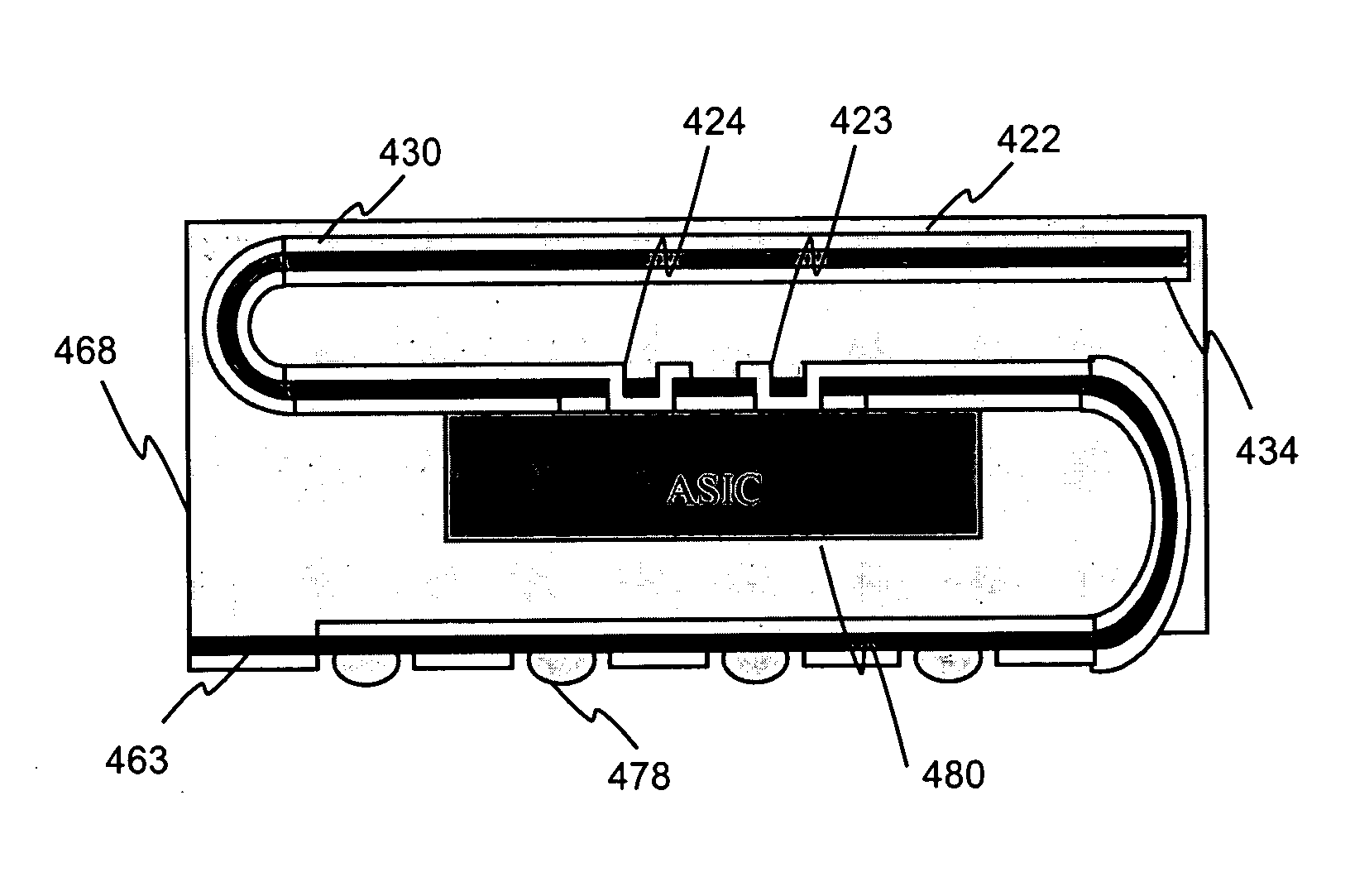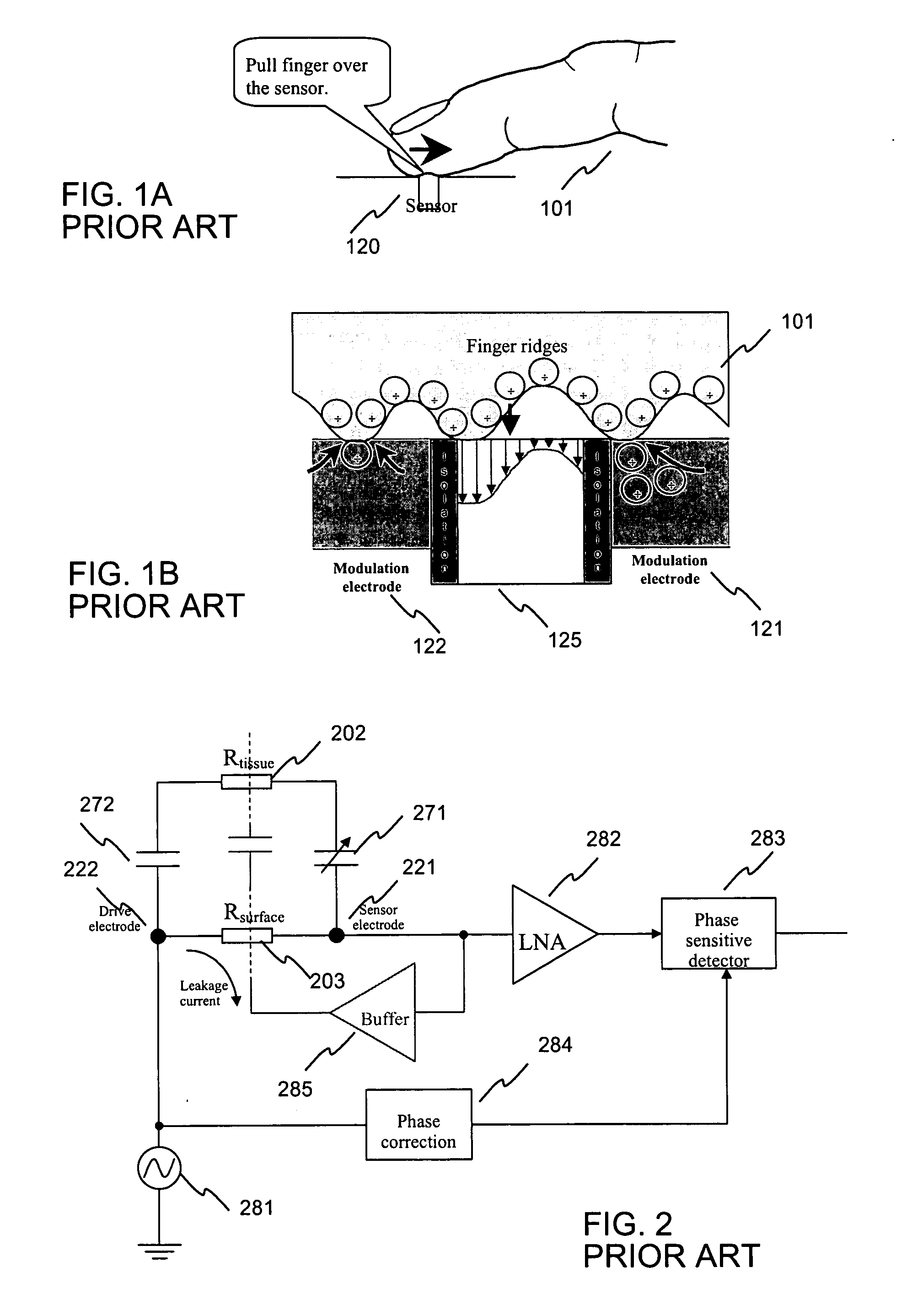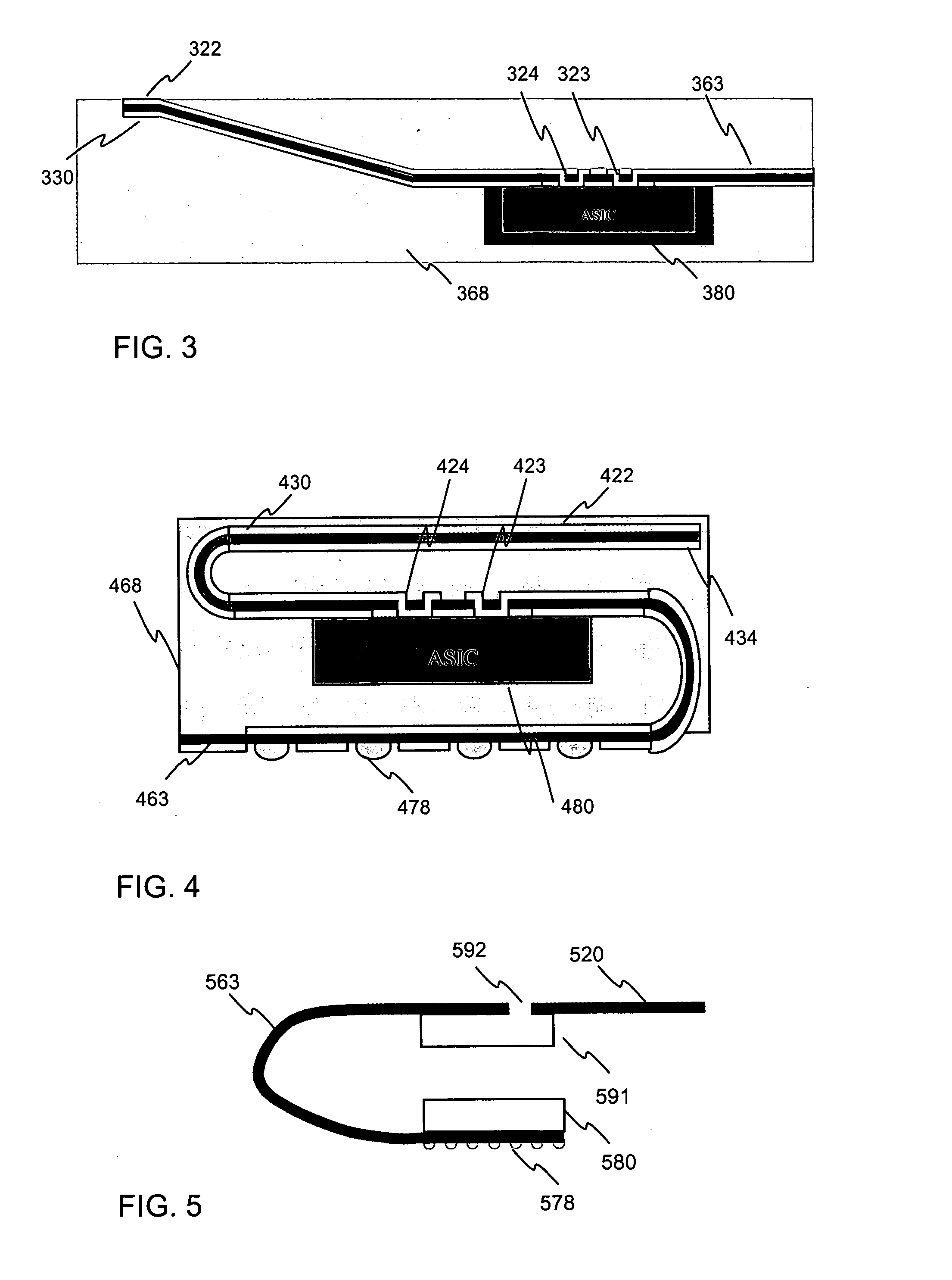Sensing arrangement
a technology of sensing arrangement and sensor, applied in the field of sensing arrangement, can solve the problems of complex manufacturing process, low resistance of wiring, easy breakage of structure, etc., and achieve the effect of facilitating the realization of a multi-sensor microsystem, high resistance loss sensitive, and cost-effectiv
- Summary
- Abstract
- Description
- Claims
- Application Information
AI Technical Summary
Benefits of technology
Problems solved by technology
Method used
Image
Examples
first embodiment
[0069]FIGS. 13a and 13b illustrate a cross-sectional view and a top view of an electrode arrangement according to the invention. In this embodiment sensing electrode s is led on a conductive layer, which is between two guard layers g. this way it is possible to achieve an efficient guarding for the sensing electrode. The drive electrodes D are led on the top conductive layer.
second embodiment
[0070]FIGS. 14a and 14b illustrate a cross-sectional view and a top view of an electrode arrangement according to the invention. In this embodiment sensing electrode s is led on a conductive layer, which is between a guard layer g and a grounded EMC layer. The drive electrodes D are led on the top conductive layer.
third embodiment
[0071]FIGS. 15a and 15b illustrate a cross-sectional view and a top view of an electrode arrangement according to the invention. In this embodiment sensing electrode s is led on a conductive layer, which is between two grounded EMC layers. The guard does not have layer of its own, but it led on same layers as the sensor and drive electrodes. This is possible when the guard electrode wiring and the sensing electrode wiring are perpendicular to each other.
PUM
 Login to View More
Login to View More Abstract
Description
Claims
Application Information
 Login to View More
Login to View More - R&D
- Intellectual Property
- Life Sciences
- Materials
- Tech Scout
- Unparalleled Data Quality
- Higher Quality Content
- 60% Fewer Hallucinations
Browse by: Latest US Patents, China's latest patents, Technical Efficacy Thesaurus, Application Domain, Technology Topic, Popular Technical Reports.
© 2025 PatSnap. All rights reserved.Legal|Privacy policy|Modern Slavery Act Transparency Statement|Sitemap|About US| Contact US: help@patsnap.com



